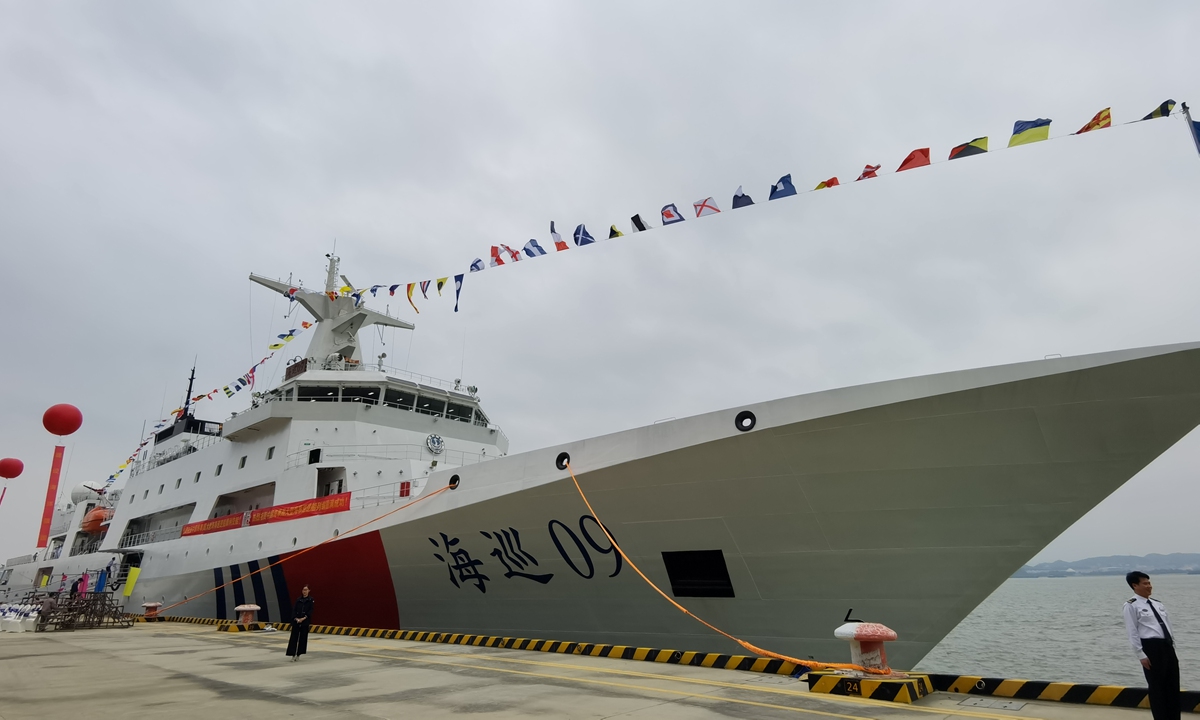China commissioned its first 10,000-ton class maritime patrol vessel Haixun 09 with the most advanced technologies and strong comprehensive capability on Saturday, and the ship is expected to enhance the country's maritime traffic governance.

As the first such comprehensive command flagship in China's maritime system operating in deep seas, the Haixun 09 has the capabilities of cross-sea safety patrols and emergency search and rescue efforts in complex ocean environments. It will serve as a mobile law enforcement platform for maritime patrols, as well as emergency coordination and command, and the command of pollution prevention at sea, China Central Television (CCTV) reported.
As an important component of China's large maritime service fleet, the vessel will strengthen China's maritime traffic dynamic control and emergency support capabilities.
It will play a significant role in effectively ensuring the smooth transportation of strategic goods and safety of important shipping lanes, realizing the stability of international maritime logistics supply chains, supporting the high-quality development of the shipping industry, and safeguarding China's maritime rights and interests.
The vessel joined maritime law enforcement formation in Guangzhou, South China's Guangdong Province on Saturday.
Construction work on the vessel started in May 2019. It has a total length of 165 meters, a width of 20.6 meters, a depth of 9.5 meters and a full displacement of about 13,000 tons. It has an endurance of at least 10,000 nautical miles at a speed of 16 nautical miles per hour. It has a maximum speed of more than 25 knots.
The vessel was designed to operate in the open seas far beyond the coastal region, with a maximum of 90 days without being resupplied with fuel and food.
It also has a helicopter landing pad and a data center equipped with satellite communication systems, including China's Beidou Navigation Satellite System, to monitor and give early warnings, process information, and comprehensively command and regulate at sea.
Source: Global Times